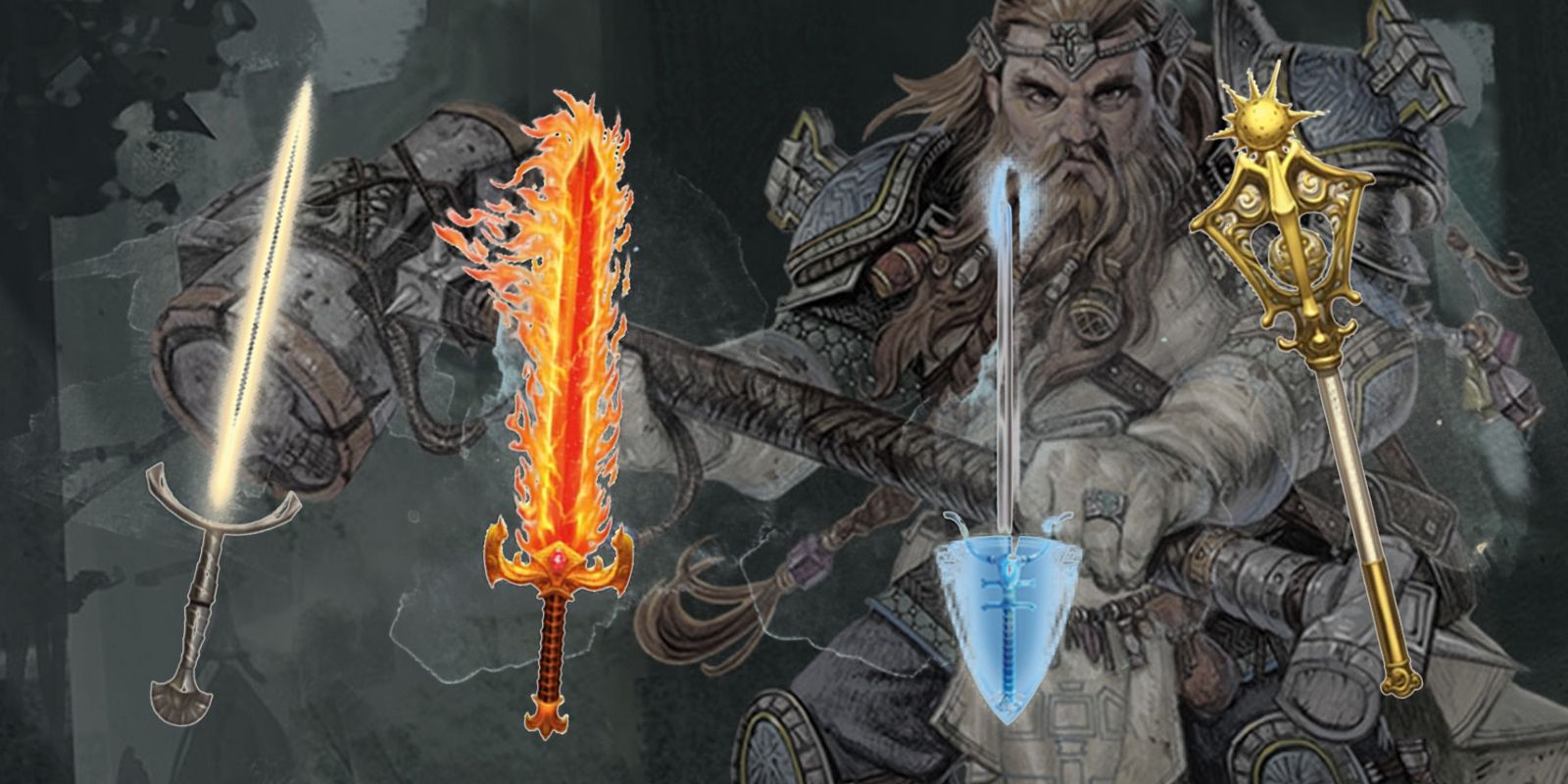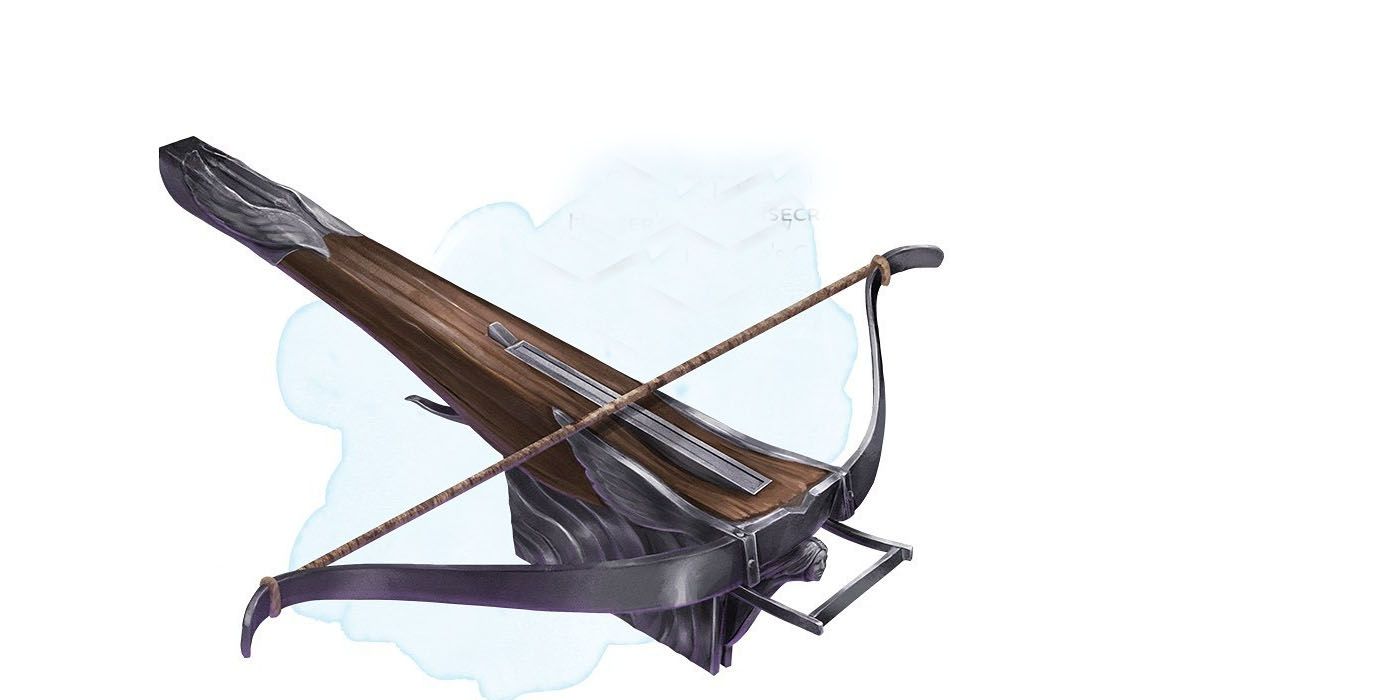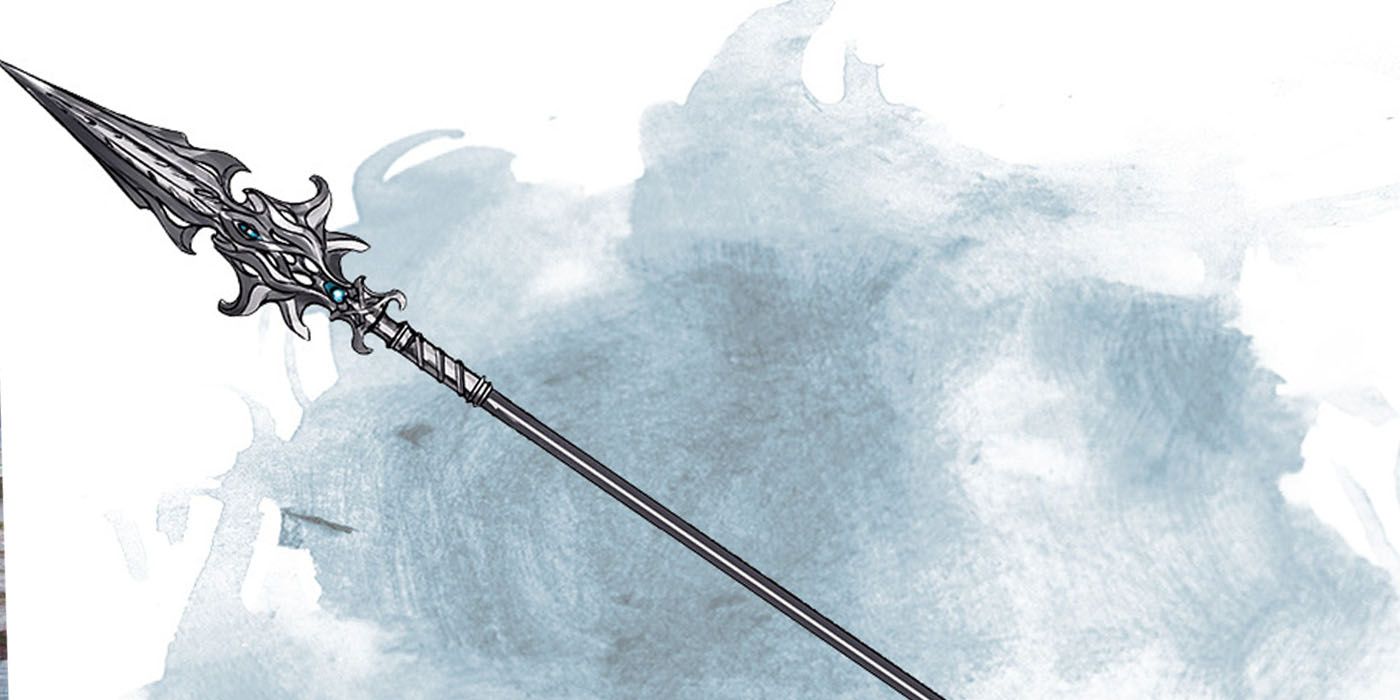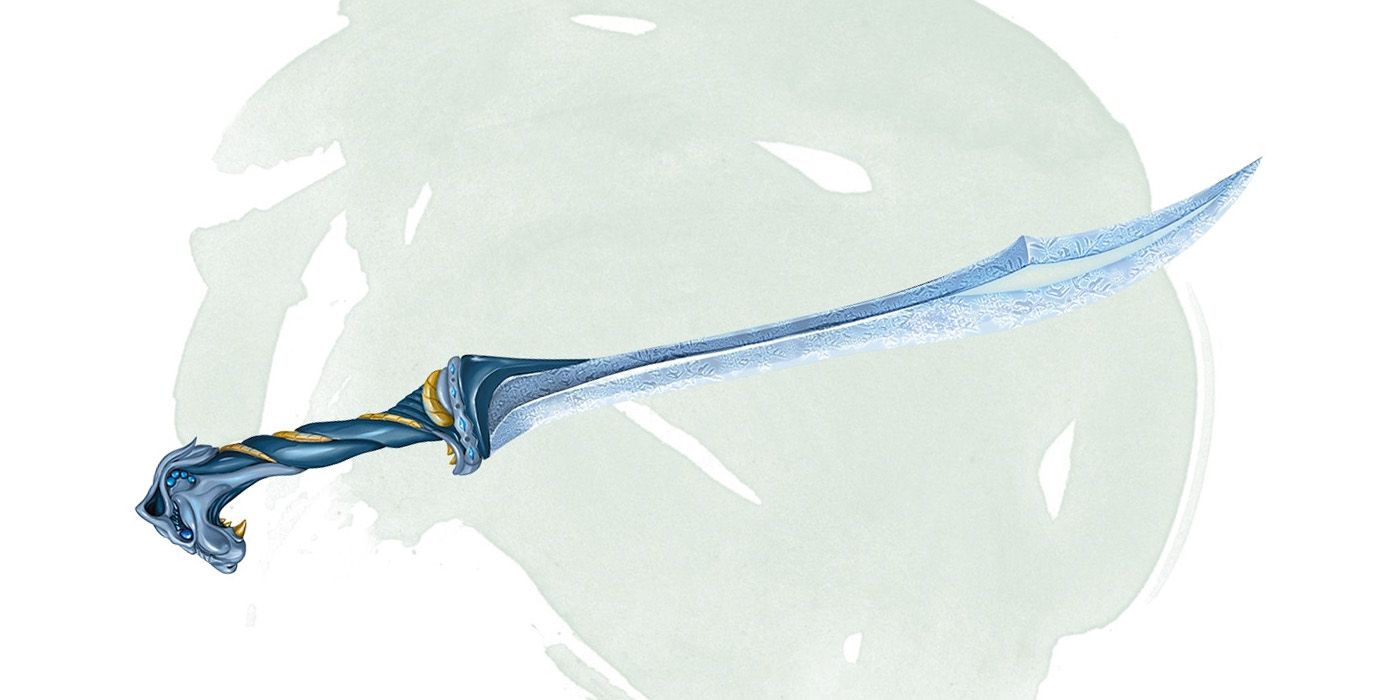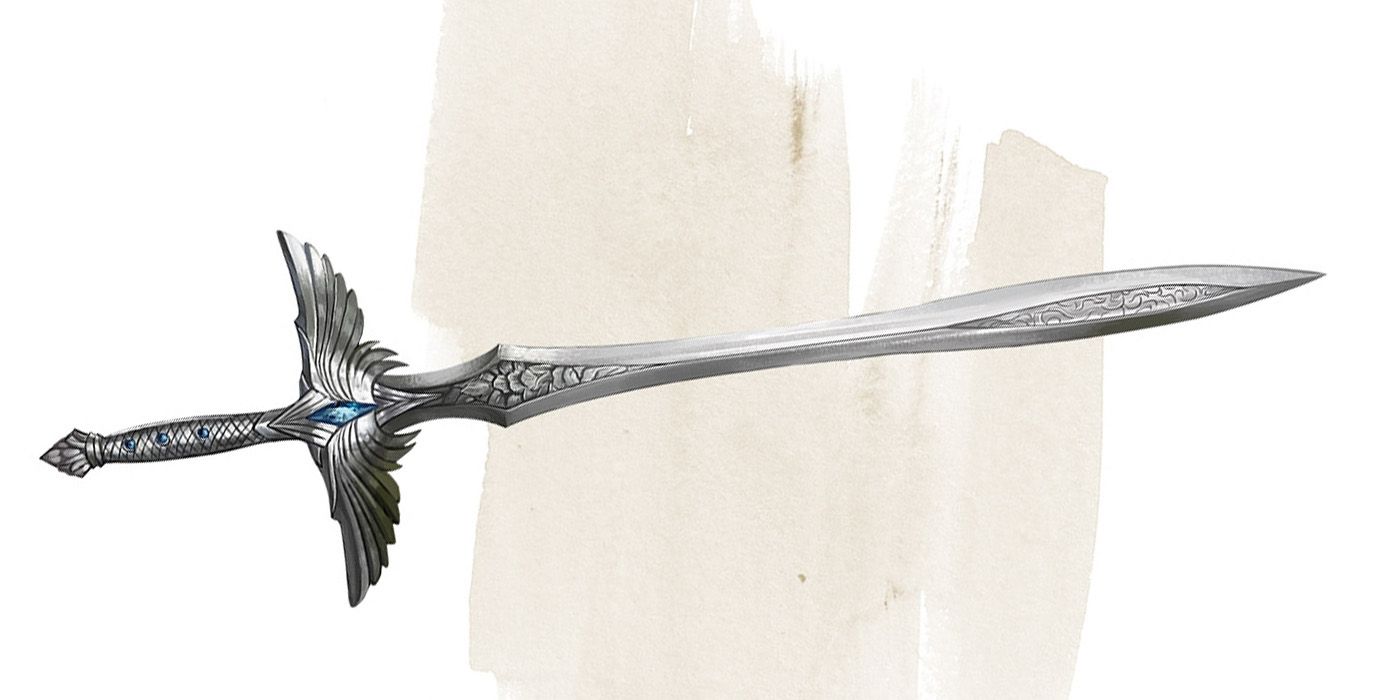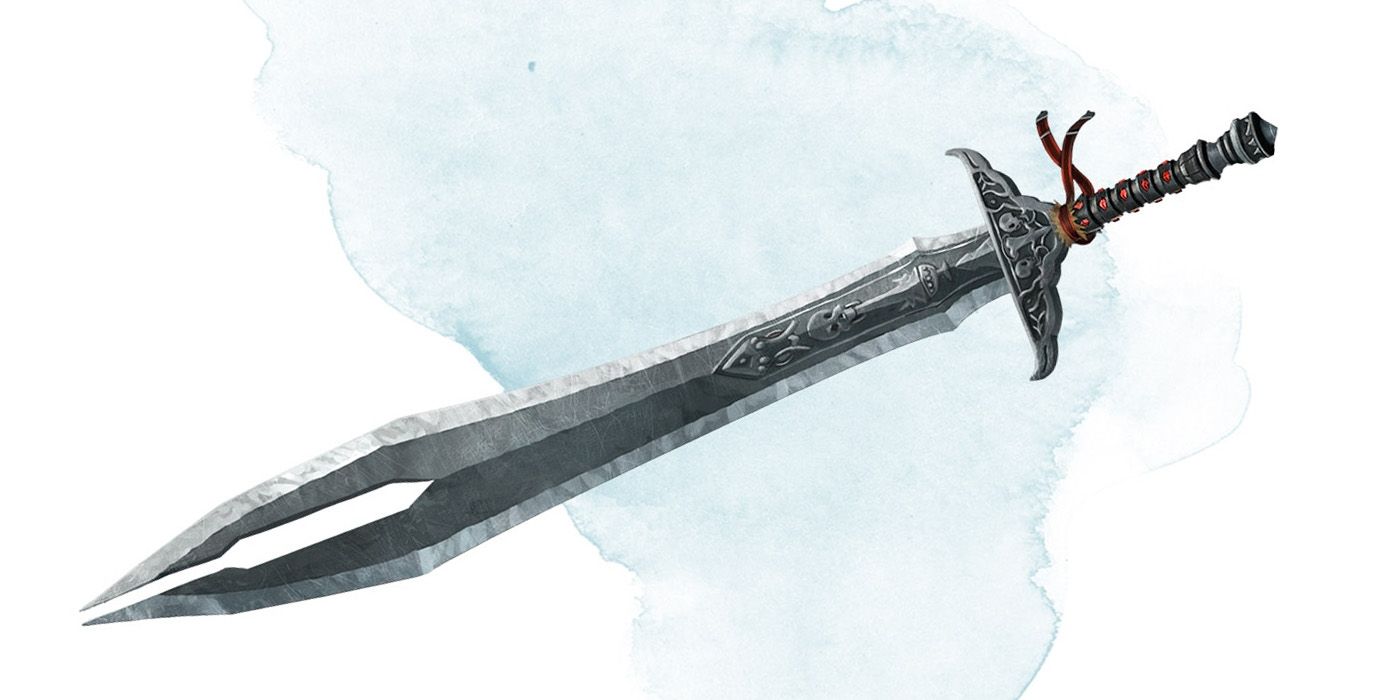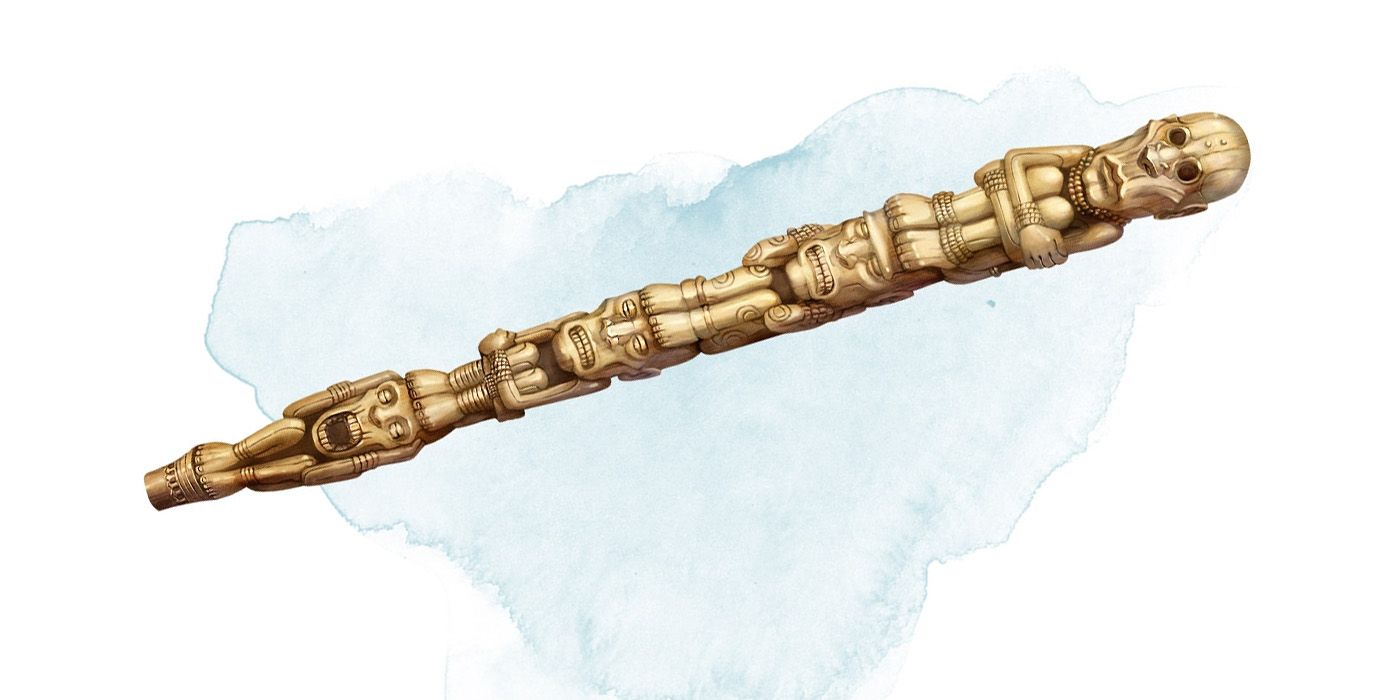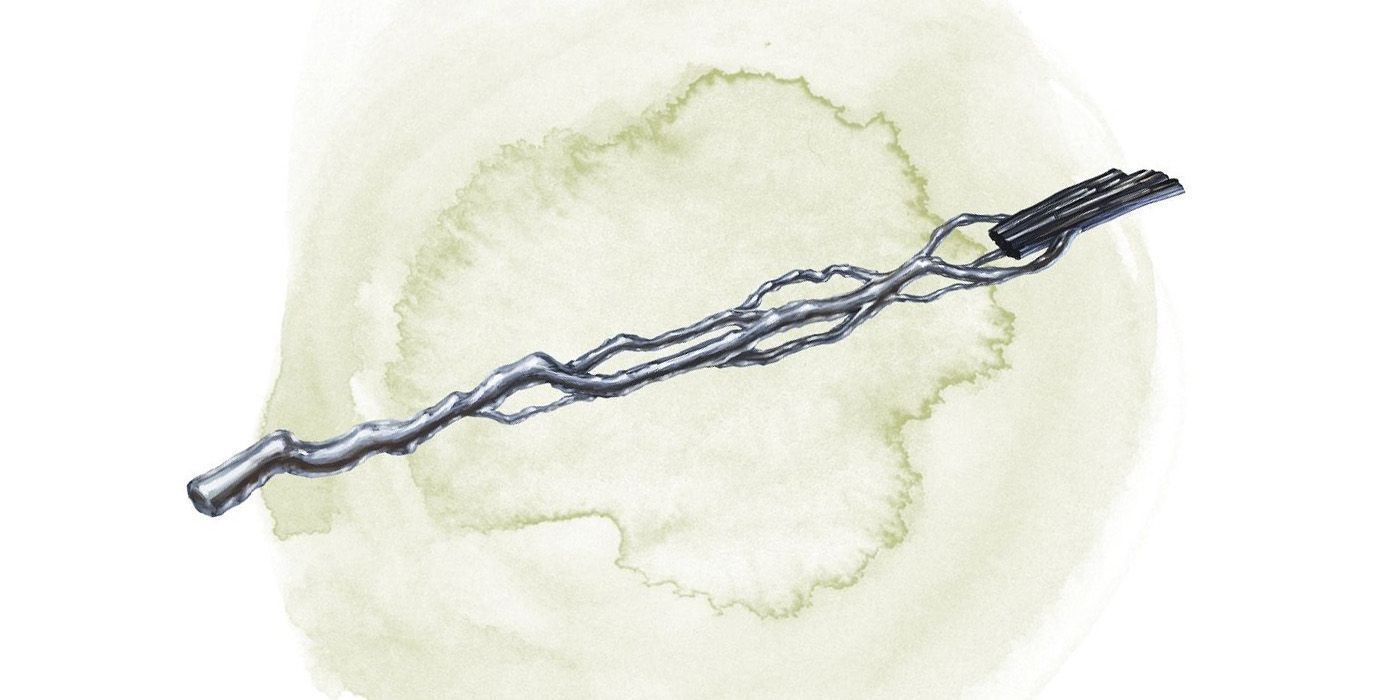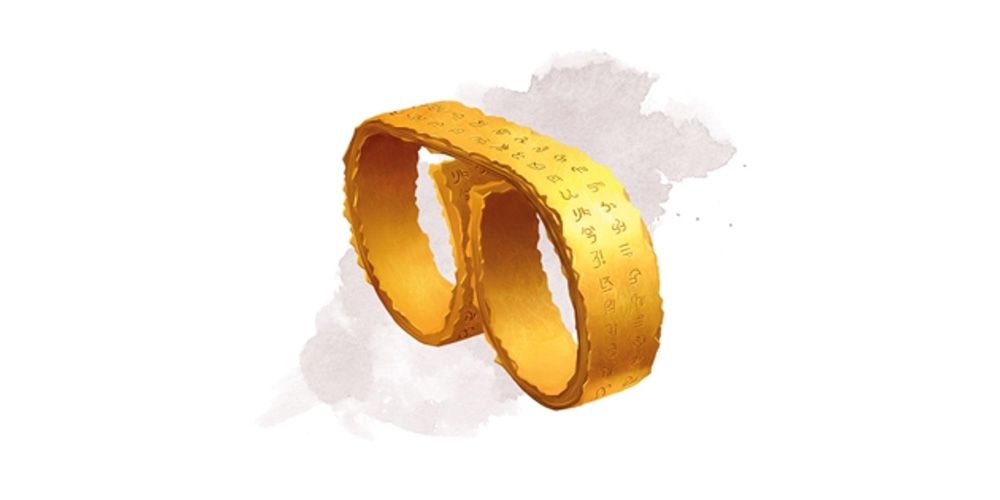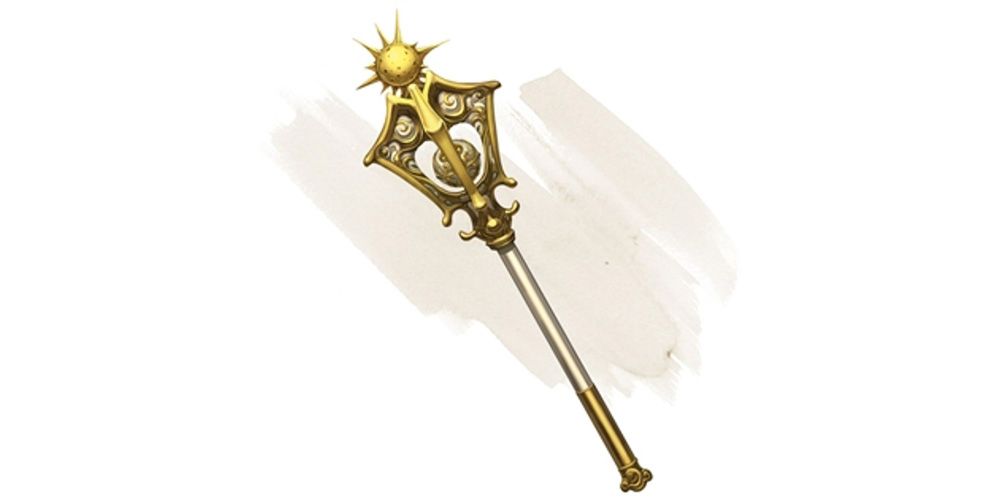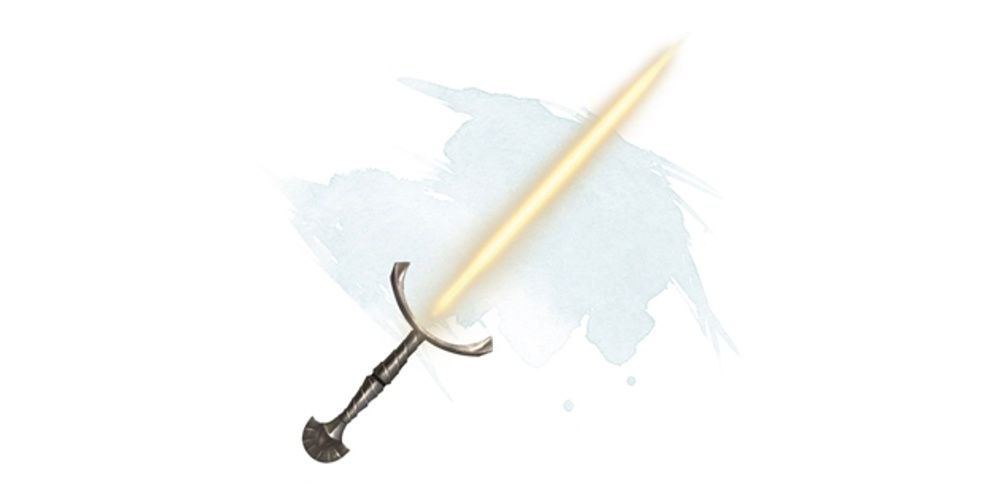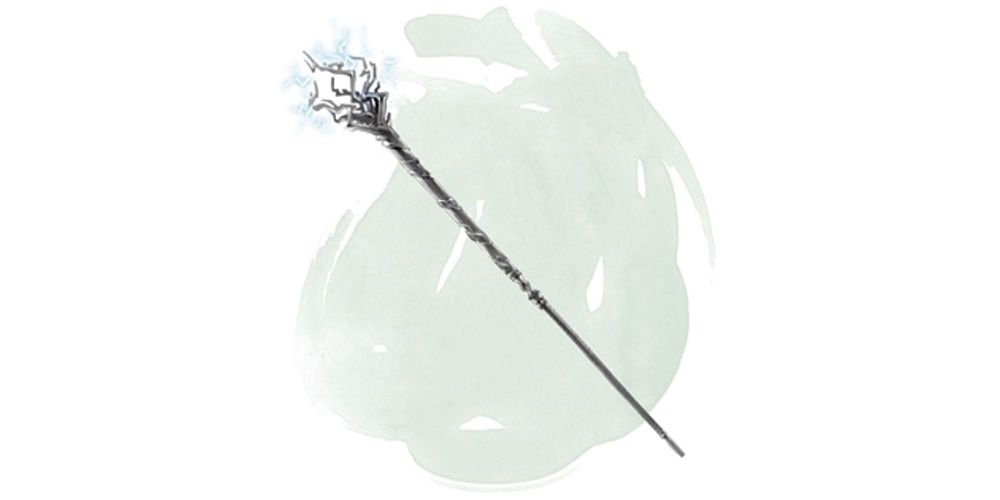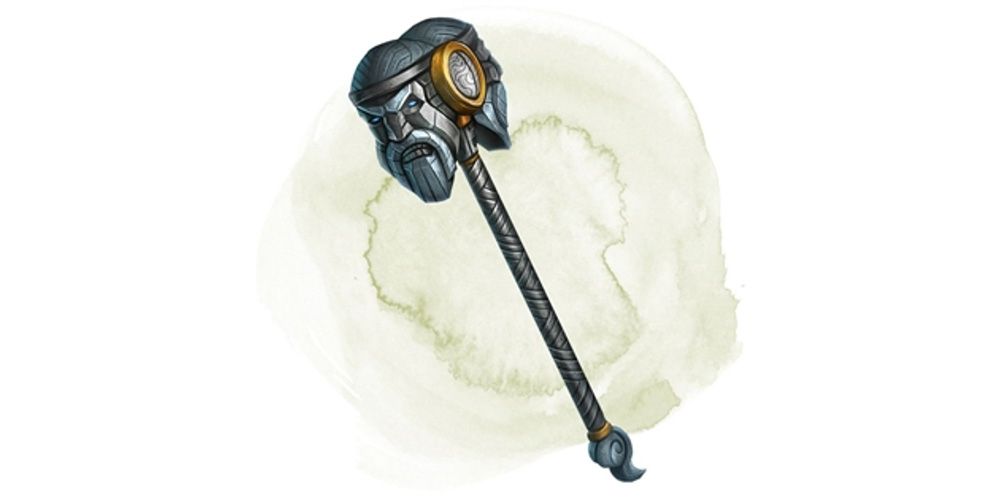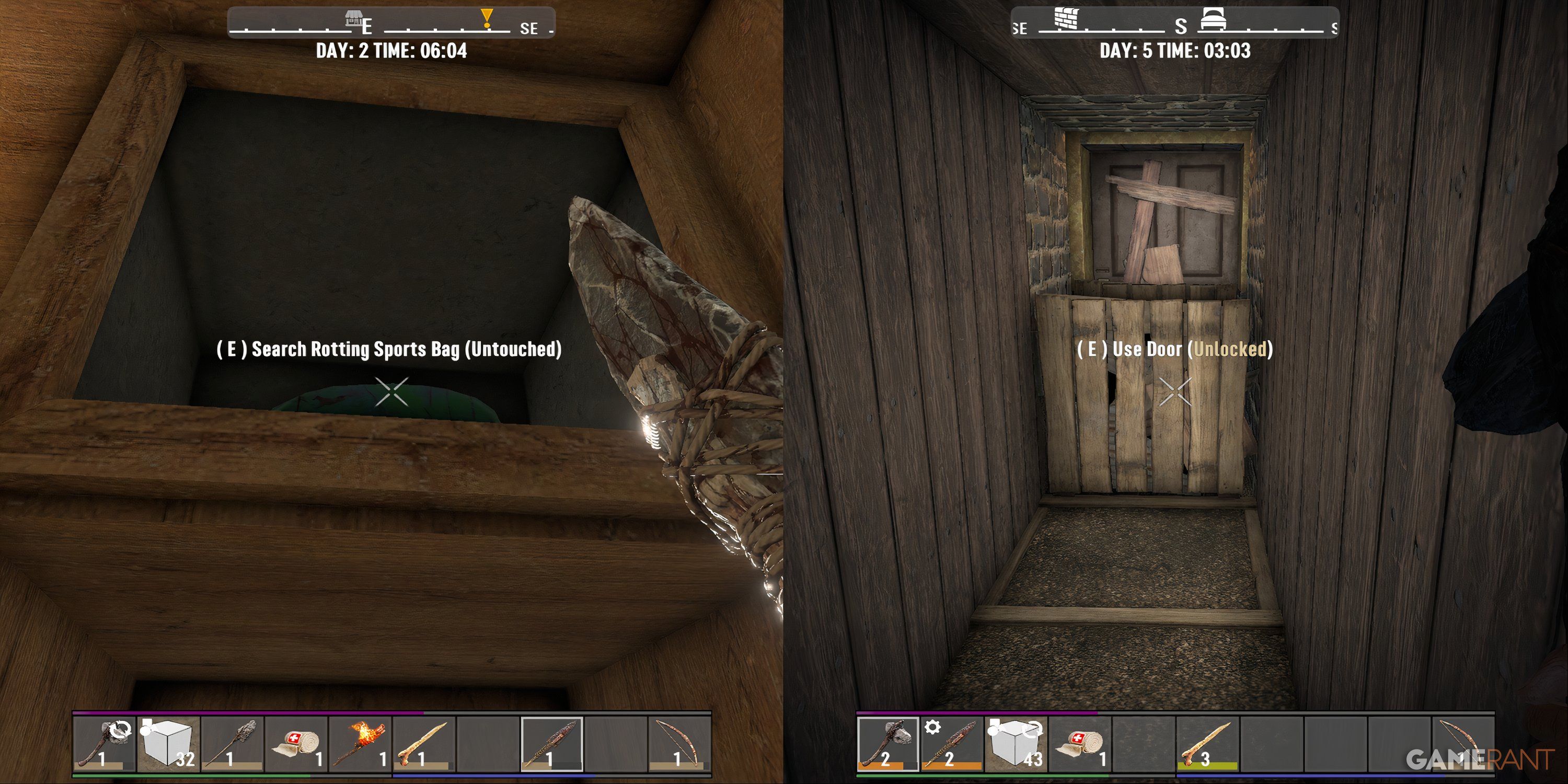Highlights
- Clerics in D&D 5e have diverse skills and can use weapons like staves, rods, and crossbows to deal damage and heal allies.
- Magical weapons like the Weapon Plus series and unique items like the Rod of Hellish Flames enhance a Cleric’s combat abilities in campaigns.
- Weapons like the Staff of the Python and Staff of Healing offer utility and companion options for Clerics, while items like the Ring of Spell Storing provide spellcasting versatility.
Healers such as Clerics remain a constant in adventuring parties due to their invaluable healing abilities. In Dungeons & Dragons (D&D) Fifth Edition (5e), Clerics remain a popular class to pick for players who want to have healers with a diverse set of skills.
Dungeons & Dragons: 5 Things Every Cleric Should Do During A Session (& 5 Things to Avoid)
Clerics are one of Dungeons & Dragons’ most versatile classes, but being a good one can be a bit tricky. Here are some tips to help players out
In 5e, gone are the days when Clerics stayed behind tanky allies to prioritize healing the party. A lot of players are now finding more ways to make their Clerics more versatile characters in their campaigns. Clerics who want to deal just as much damage as they heal can refer to this guide to the best Cleric weapons in D&D 5e.
Updated April 15, 2024 by Rhenn Taguiam: With 2024 as the release year for the updated Player’s Handbook alongside OneD&D, fans of the acclaimed TTRPG may be curious as to how the new release will likely impact the state of both their current and upcoming campaigns. For Cleric hopefuls, this change might mean having to change their current playstyles or even anticipate the arrival of more content they can tinker with as they worship their deities while saving the world at the same time.
Thankfully, Cleric players can still rely on a couple of weapons to get the job done, especially from the perspectives of both straightforward combat and strategic engagements. Among must-have Cleric weapons include staves that change forms, a fire-leaning rod, and upgraded weapons.
24 Weapon +1, +2, +3
Any Weapon, Any Type
|
Rarity |
Uncommon, Rare, Very Rare |
|---|---|
|
Weapon Tree |
Any |
|
Bonus |
+1, 2, 3 |
|
Effects |
+1, 2, 3 to Attack and Damage Rolls |
Unlike other armaments in Dungeons & Dragons, the Weapon Plus series (Weapon +1, +2, +3) works under the assumption that even a “generic” weapon can be made magical without being necessarily named. From a roleplaying perspective, these weapons are magically enhanced to be able to attack more monstrous threats that ordinary weapons aren’t able to do. Technically speaking, they provide +1 and up to +3 to both Attack and Damage Rolls.
Due to the magical nature of these Weapon Plus armaments, Clerics might think they can only get them from special sources. However, by virtue of their base weapons being mundane, it’s theoretically possible to ask the Dungeon Master for such a weapon when they visit most blacksmiths in most cities. More powerful Weapon Plus variations could come from more popular blacksmiths, craftsmen, and alchemists.
Weapon Plus: How Does It Fit The Divine Agent?
At the end of the day, the Weapon Plus series only works depending on the direct bonus a Cleric gets. All of the Weapon Plus options are barely enough to cross over Cantrip territory, making Light Crossbows more reliable alternatives. However, Clerics who insist on using melee weapons for their combat could potentially benefit from these armaments, especially if the Dungeon Master provides higher-grade options for lesser requirements.
23 Rod Of Hellish Flames
Rod, Adventuring Gear
|
Rarity |
Very Rare |
|---|---|
|
Weapon Tree |
– |
|
Bonus |
– |
|
Effects |
|
Hailing from The Book of Many Things, a Cleric can use the Rod of Hellish Flames to cement their control over holy fire to burn heretics, unbelievers, and forces of evil into oblivion. While not necessarily a weapon in a traditional sense from a D&D campaign perspective, the aggressive nature of the Rod can allow Clerics to depend on it as a once-per-day hyper-aggressive tool for powerful burst damage. Searing Rebuke casts 4th-Level Hellish Rebuke for as much as 5d10 Fire Damage, while its daily Surge of Brimstone can cap the damage of any Fire and Necrotic Spell they cast.
The nature of the Rod of Hellish Flames as an infernal-sounding item may imply storage inside a temple dedicated to fiery worship. This doesn’t necessarily have to be an evil-aligned temple, but perhaps a temple aligned to a war god, a fiery being, or even a place of rest for zealous worshippers.
Rod Of Hellish Flames: How Does It Fit The Divine Agent?
The key advantage of using the Rod of Hellish Flames has less to do with its potential as a weapon but more to do with how it benefits Clerics who can use Fire and Necrotic Damage. Granted, its once-a-day use can make the Rod of Hellish Flames more of a one-time burst weapon every encounter. However, the Rod’s technical terminology states there’s no need to roll damage to maximize its effect. As such, it suits continuous and spammable effects, such as those of Spirit Guardians.
22 Staff Of The Python
Quarterstaff, Simple Weapon
|
Rarity |
Rare |
|---|---|
|
Weapon Tree |
Quarterstaff |
|
Bonus |
– |
|
Effects |
|
It’s not all the time that classes other than Wizards, Warlocks, Bards, and Rangers get companions. Thanks to the Staff of the Python, a Cleric also has the opportunity to get a pet of their own – a snake. Should players use the staff’s command word, the Staff of the Python transforms into a Giant Constrictor Snake capable of incapacitating opponents. On the player’s turn, they can mentally command the snake to move or perform actions such as attacking – although when it dies, it transforms back into a staff and is destroyed.
As the weapon is nature-aligned, the Staff of the Python may be located in forests or groves, as well as forest-aligned places of worship. An abandoned monastery or even temple could be the home to the Staff of the Python. Likewise, a trip to the forest could have the Giant Constrictor Snake as its natural inhabitant, with the Staff having a unique origin story that players can find out later in the campaign.
Staff Of The Python: How Does It Fit The Divine Agent?
Serving more as a utility than a direct combat weapon, the Staff of the Python can act as a nifty companion provided it doesn’t die in direct conflict. Players can transform it into a CR 2 Giant Constrictor Snake to incapacitate targets, especially if they have low Acrobatics and Athletic. Moreover, its Blindsight property lets the snake become a useful scout in dark conditions. Since there’s a risk of losing the staff forever when the snake dies, it’s advisable to turn it back into a staff when it’s in danger.
21 Staff Of The Adder
Quarterstaff, Simple Weapon
|
Rarity |
Uncommon |
|---|---|
|
Weapon Tree |
Quarterstaff |
|
Bonus |
– |
|
Effects |
|
It’s not always that a Cleric can obtain a transforming staff in their Dungeons & Dragons gameplay, but this is exactly what the Staff of the Adder does for them. When acquired, they can make the head of the staff transform into a snake for a minute. The head has a 5-foot reach and can attack for 3d6 Poison Damage. As a partially living object, the head gets AC 15 and 20 HP, and the staff is destroyed once opponents also destroy the snake.
The unique properties of the Staff of the Adder can make its acquisition attached to nature-inclined temples or even homes of spellcasters that a D&D player’s character can meet. The transforming quality of the staff can make it an entertaining tool, making it possible for the staff to be stored in caravans and even purchased in entertainment shops in larger campaign cities.
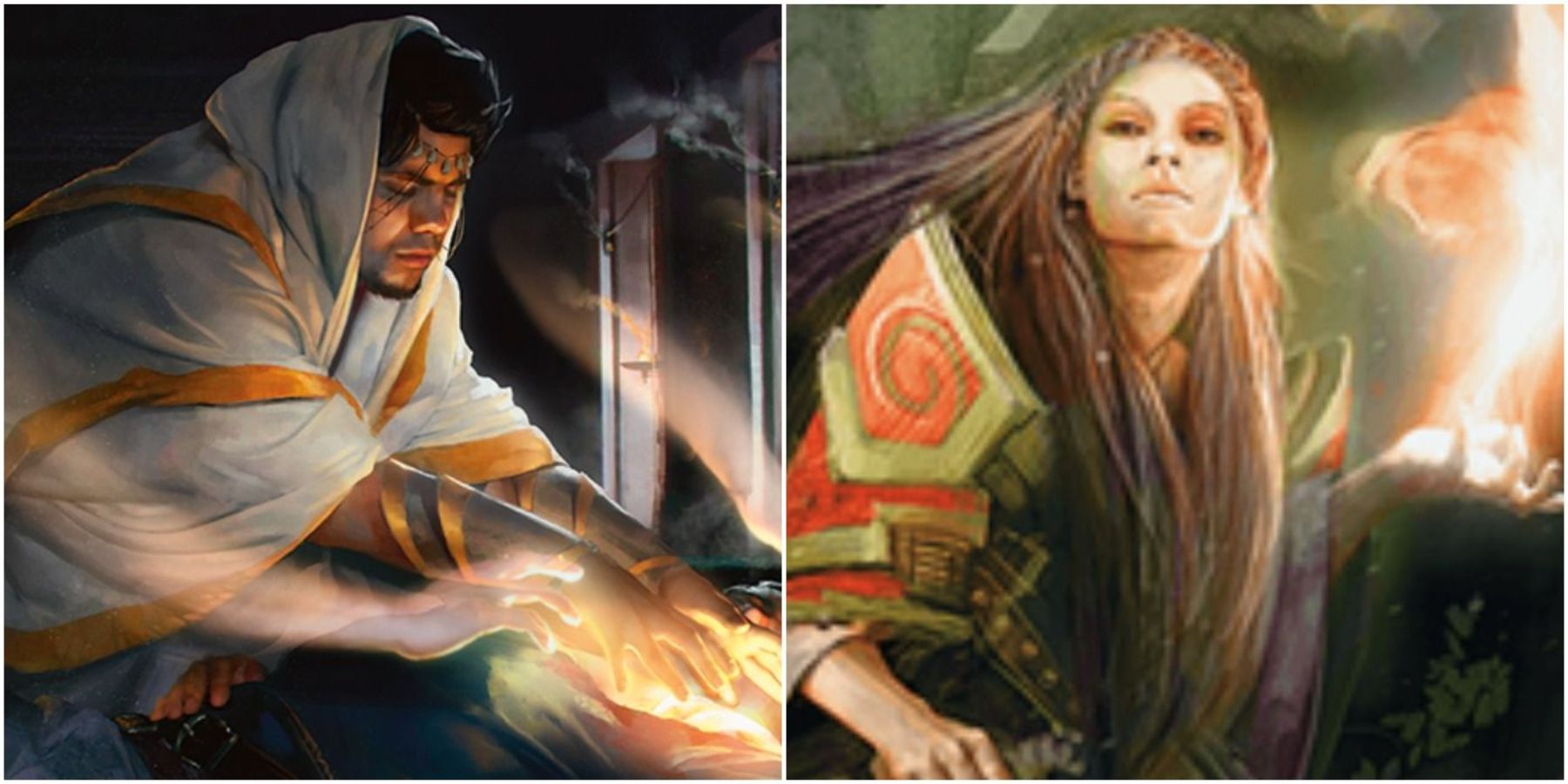
27 Best Healing Spells In Dungeons & Dragons 5e, Ranked
For players looking to build dynamic, flexible D&D characters, healers are a great choice. Here are some of the best spells for them to learn.
Staff Of The Adder: How Does It Fit The Divine Agent?
If the Cleric doesn’t mind playing with a bit of technicality with their Strength and the properties of the Staff, then the Staff of the Adder can be a decent addition to a melee Cleric’s repertoire. Assuming its description fits a Weapon Attack, then Divine Strike can likely work in conjunction with releasing the snake. This technically allows the player to deal 3d6 Poison Damage – a kind of damage reserved usually for more powerful Spells or those from Martial classes. If enemies decide to attack the snake, then recalling it and activating it again for two Bonus Actions can get the players up to speed.
20 The Light Crossbow
Simple Weapon, Common
|
Rarity |
Common |
|---|---|
|
Weapon Tree |
Simple |
|
Bonus |
– |
|
Effects |
1d8 Piercing, Loading, Range (80/320), Two-Handed |
While the Mace remains the thematic weapon of a Cleric, the Light Crossbow remains a decent alternative, especially for players who want to outlast it from a long-range standpoint. Being a healer first and foremost, the Cleric is able to protect themselves from afar without having to rely on their Spells is a must for practical or first-time Dungeons & Dragons players.
In turn, lower-level Clerics might consider grabbing a Light Crossbow for their primary weapon of choice. This is primarily because Light Crossbows may deal more damage than basic damaging Cantrips, leaving Clerics with more room for utility Cantrips to benefit the team. Not to mention, the common nature of the Light Crossbow makes it an often-available weapon in most stores.
Light Crossbow: How Does It Fit The Divine Agent?
Given the Monk’s more melee-oriented aggressive toolkit, the Light Crossbow makes for the equivalent of a sidearm. Being able to deal 1d8 Piercing over a large distance immediately makes the Light Crossobw a more reliable Cantrip compared to the Cleric’s spellcasting variants, making for a more risk-free ranged option while Clerics focus on buffing or healing allies.
19 The Javelin
Simple Weapon, Common
|
Rarity |
Common |
|---|---|
|
Weapon Tree |
Simple |
|
Bonus |
– |
|
Effects |
1d6 Piercing, Thrown (30/120) |
Players who are aiming to gear up their Cleric with powerful swords but refuse to ascribe to the stereotypical Mace might want a similarly useful weapon without resorting to the Light Crossbow. This is where the Javelin comes in.
Boasting a similar damage toolkit as the Light Crossbow, the Javelin remains a decent alternative primarily due to its D&D damage attribute Strength requirement versus the Light Crossbow’s Dexterity-based damage. On top of this convenience, the Javelin is a common enough armament that most weapon stores, smiths, and even armories likely have them in stock.
Javelin: How Does It Fit The Divine Agent?
Should the Cleric not have access to the Spear, the Javelin works just fine as a substitute. Due to the lack of the Versatile Property, Clerics immediately lose access to the ability to use this one-handed or two-handed. However, being able to Throw the Javelin gives Clerics access to more range. This option should be allowing them to use the weapon in melee when necessary or even thrust the armament to an opponent.
18 Lightbringer
Simple Weapon, Uncommon
|
Rarity |
Uncommon |
|---|---|
|
Weapon Tree |
Mace |
|
Bonus |
+1 to Attack, Damage Rolls |
|
Effects |
|
Clerics with a Mace remain an iconic enough image in almost any Dungeons & Dragons scenario, but players who love this aesthetic can take the “holy look” a step further with Lightbringer. First introduced in the “Lost Mines of Phandelver” adventure, Lightbringer is a Mace created for a Cleric worshiping Lathander, the god of dawn. In turn, its design features a head shaped like a sunburst, with the weapon able to glow like a torch upon command.
Perhaps more interesting is that the weapon itself is a +1 Mace, granting a small bonus to both Attack and Damage Rolls. Not only that, but it also deals an extra 1d6 of Radiant damage against undead creatures. Given its nature as a Legendary Artifact, Lightbringer is often found in hidden temples and potentially locked away in vaults located in places sacred to the divine and holy. If Dungeon Masters have a canon deity like Lathander as a worshipped god in their game, the weapon may be located in a temple dedicated to him.
Lightbringer: How Does It Fit The Divine Agent?
While essentially acting as a Mace +1, the Lightbringer’s extra 1d6 Radiant Damage against undead creatures acts as a miniature Divine Smite against these enemy types. Even without the +1d6 against the undead, its base 1d6+1 Damage in melee makes for a decent weapon upgrade. Considering how often parties will likely fight undead foes, the Lightbringer is a must-have Mace even in emergencies.
17 Frost Brand
Martial Weapon, Very Rare
|
Rarity |
Very Rare (Requires Attunement) |
|---|---|
|
Weapon Tree |
Any Sword |
|
Bonus |
+1d6 Cold Damage |
|
Effects |
Holding the sword will:
|
Clerics who want to add an elemental spin to their gear will appreciate Frost Brand. This sword deals 1d6 Cold damage to enemies while giving the wielder Fire resistance. The blade also emits light (10 feet bright, 10 feet dim) when exposed to freezing temperatures. For added effect, drawing Frost Brand will extinguish all flames of nonmagical origin within 30 feet of the wielder.

Dungeons & Dragons: 10 Fighters In Gaming And Their D&D Builds
Want to add a touch of Devil May Cry or God of War to Dungeons & Dragons? Then here is how to build 10 popular fighter characters from gaming.
Introduced in the Dungeon Master’s Guide, this Very Rare (Requires Attunement) sword serves as the counterpart to Flame Tongue. Given its rarity, Clerics can acquire Frost Brand in an ancient temple or a holy site of a deity attuned to frost.
Frost Brand: How Does It Fit The Divine Agent?
Although the Frost Brand deals lesser damage to its opposing weapon pair Flame Tongue, it boasts varying damage ranges for Shortswords and Scimitars (1d6 Piercing, Slashing) as well as Rapiers and Longswords (1d8 Piercing, Slashing). Moreover, the additional 1d6 Cold Damage on top of Resistance to Fire Damage can make the Frost Brand a decent substitute for a main weapon, especially when facilitating combos.
16 Holy Avenger
Martial Weapon, Legendary
|
Rarity |
Legendary (Requires Attunement by a Paladin) |
|---|---|
|
Weapon Tree |
Any Sword |
|
Bonus |
+3 to Attack, Damage Rolls |
|
Effects |
|
Situated atop the pinnacle of holy weapons lies the Holy Avenger, a Magic Weapon fit for the avatar of the deities. Wielders gain +3 Attack Rolls and +3 Damage Rolls. In addition, Undead creatures take an extra 2d10 Radiant damage should their flesh meet the Holy Avenger. Additionally, drawing the weapon releases a 10-foot aura of light that grants an advantage on Saving Throws against magical effects.
Unlike other weapons on the list, the Holy Avenger requires the attunement of the Paladin. As such, Clerics interested in using the weapon would need to multiclass as a holy knight. However, DMs may make an exception by granting Holy Avenger as a reward from the Cleric’s Patron Deity.
Holy Avenger: How Does It Fit The Divine Agent?
At its core, Holy Avenger is best used should the Cleric take a dip into Paladin, making it a recommendation to at least dip 2nd-Level Paladin up to 4th-Level Paladin. This secures three spell slots as well as Divine Smite that deals +2d8 Radiant Damage to opponents after the attack roll is called on top of +1d8 against the undead. When fighting an undead opponent, popping multi-attack with the Holy Avenger augmented with Divine Smites could deal massive damage before Clericsneed to take their Long Rest. Such an option becomes more viable for Clerics who want to get into tanking as well.
15 Sword Of Life Stealing
Martial Weapon, Rare
|
Rarity |
Rare (Requires Attunement) |
|---|---|
|
Weapon Tree |
Any Sword |
|
Bonus |
– |
|
Effects |
Rolling a 20 on the Attack Roll with this weapon will:
|
Clerics who want a darker theme to their signature weapon might want to hunt for the Sword of Life Stealing. This Rare (Requires Attunement) Magic Weapon deals 3d6 Necrotic damage to its target during a critical hit. The wielder also obtains Temporary HP equal to the aforementioned extra damage. However, Clerics should note that this weapon won’t work against Undead or Constructs.
This Sword might seem uncharacteristic for an ordinary Cleric to wield. However, Clerics who want an alternative to the stereotypical “holy” weapon can find the Sword of Life Stealing in the temple of a dark deity. Clerics who have taken a grim turn in their alignment may have the Sword to blame for their crisis (or enlightenment?) of faith.
Sword Of Life Stealing: How Does It Fit The Divine Agent?
Given the condition that it’s only with an attack roll of 20 that this Sword will deal an extra 10 Necrotic Damage on top of gaining 10 Temporary Hit Points, Clerics players can argue the Sword should work even if the 20 is obtained via bonuses. In this case, hyper-optimizing the Cleric to have as high Strength as possible should make achieving at least 20 on rolls easier, making the Temporary HP gain a vital advantage for a Cleric’s self-preservation.
14 Staff Of Healing
Simple Weapon, Rare
|
Rarity |
Rare (Requires Attunement by a Bard, Cleric, Druid) |
|---|---|
|
Weapon Tree |
Staff |
|
Bonus |
– |
|
Effects |
10 Charges, regains 1d6+4 Expended Charges at dawn.
|
Clerics devoted to the art of healing and life should seek the Staff of Healing. This staff (Requires Attunement) is a common enough Magic Item for Clerics to acquire from their holy order. Additionally, its effects do complement the role expected of Clerics, especially in times of crisis.
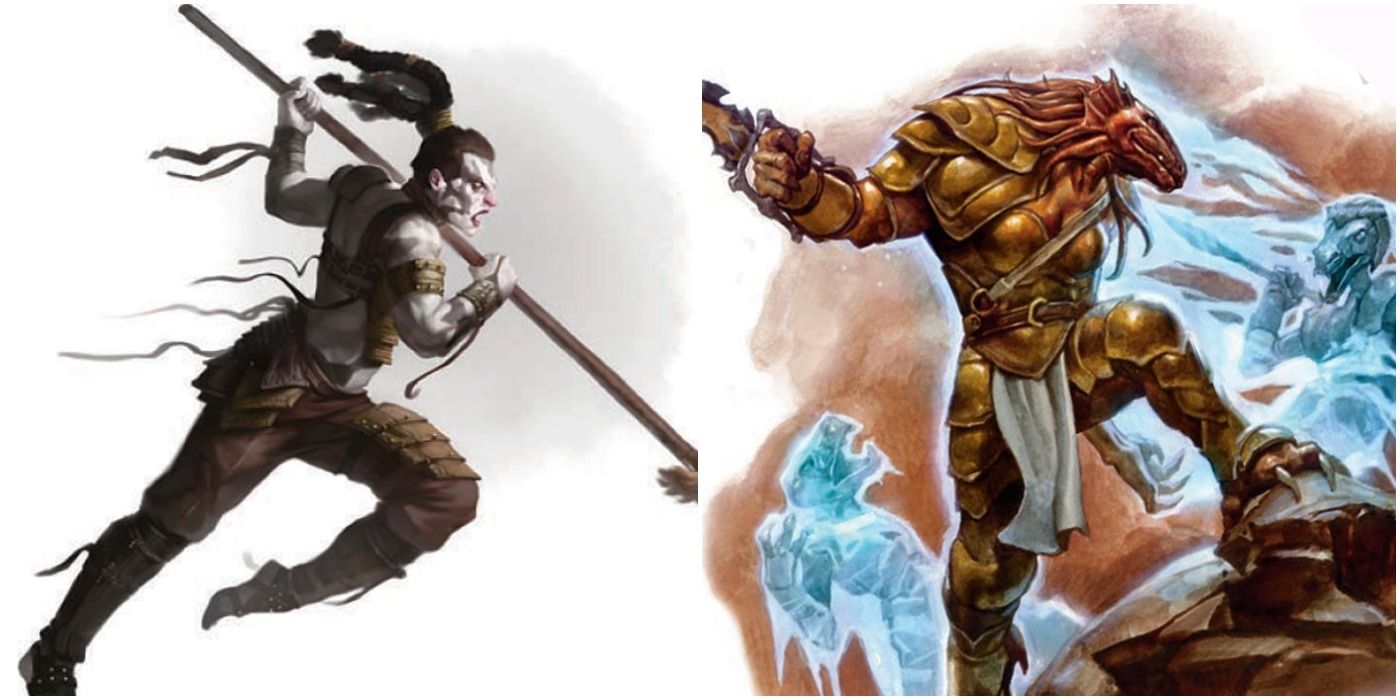
Dungeons & Dragons: 15 Subclasses From Previous Editions That 5e Should Have
In previous editions, Dungeons and Dragons introduced some great subclass options. Here are some of the best deserving of a spot in 5e.
Wielders can use an Action to spend one or more of the Staff’s ten charges on potent Healing Spells (Mass Cure Wounds, Lesser Restoration, Cure Wounds). However, losing all charges will force players to roll a d20, whereas a 1 will force the Staff to blink out of existence. Thankfully, the Staff does regain its charges daily.
Staff Of Healing: How Does It Fit The Divine Agent?
Across all basic armaments in a Cleric’s arsenal, the Quarterstaff remains a practical choice due to its Versatile (1d6/1d8 for 1H/2H) Property. Even if the Staff of Healing still deals 1d6 Damage, instant access to Cure Wounds, Lesser Restoration, and Mass Cure Wounds at manageable rechargeable uses can make this weapon a source of emergency healing. The spell slots these abilities can save the Cleric and can open room for more aggressive spells.
13 Wand Of The War Mage
Adventuring Item, Varying Rarity
|
Rarity |
Uncommon, Rare, Very Rare (Requires Attunement by Spellcaster) |
|---|---|
|
Weapon Tree |
Wand |
|
Bonus |
+1, +2, +3 to Attack Rolls, Damage |
|
Effects |
Ignores half-cover when making spell attacks |
Though Clerics devote themselves to protection, that doesn’t mean they hesitate in battle. Clerics with a penchant for head bashing will suit the Wand of the War Mage. This Wand comes in three variants (Uncommon, Rare, and Very Rare), each more potent than the last. The Wand provides a Spell Attack Roll bonus denoted by its rarity. Additionally, it certifies a Cleric’s training in Combat Spellcasting, granting them the privilege to ignore half cover when making Spell Attacks.
The variations of rarity imply that multiple Wands exist throughout the world. In turn, Clerics may acquire them from specialized vendors. Perhaps Clerics need to become part of a secret cabal of warrior-casters to gain access to the weapon.
Wand Of The War Mage: How Does It Fit The Divine Agent?
Given how Wand of the War Mage essentially acts as somewhat of a bridge between a spellcasting implement and a weapon, a Cleric could maximize this weapon’s +1 to Spell Attacks should they want more aggressive takes in combat. Since the Wand is an item and not a weapon, it should be much easier to equip should defensive Clerics feel the need to sling some radiant bolts at opponents.
12 The Mace
Simple Weapon, Common
|
Rarity |
Common |
|---|---|
|
Weapon Tree |
Simple, Mace |
|
Bonus |
– |
|
Effects |
1d6 Bludgeoning |
Nothing beats a classic. Clerics about to start an adventure won’t go wrong with a trusty mace. Pair this weapon with a shield, and a Cleric can pack a punch while having a decent Armor Class (AC).
A mace is a simple melee weapon that deals 1d6 Bludgeoning on a hit. It’s not as versatile as a longsword, but it gets the job done. It’s also a great weapon to get while you farm for a more powerful item. As a mace is an item of Standard rarity, Clerics can get it from the local blacksmith or weapons shop.
Mace: How Does It Fit The Divine Agent?
Ever the iconic weapon, the Mace is a reliable doler of 1d6 Bludgeoning Damage that doesn’t fall into the complicated territory of Martial Weapons. Its simple nature is a reflection of its main use in a Cleric build, where it’s best reserved as an emergency weapon in melee.
11 Ring Of Spell Storing
Ring, Rare
|
Rarity |
Rare (Requires Attunement) |
|---|---|
|
Weapon Tree |
Ring |
|
Bonus |
– |
|
Effects |
|
A Ring of Spell Storing sounds nothing like a weapon. As the name implies, this ring will cast any spell stored in it. Moreover, a spell cast from this ring uses the same properties as though cast by the original caster. Spells cast from the ring will be expended, and there will be space to store another spell.
Clerics attuned to this rare item can store offensive spells on it to make room in their Prepared Spells for healing abilities. This ring can help clerics offer more skills to the party during battles. Players can get this ring from magical places such as wizarding schools or ancient libraries.
Ring Of Spell Storing: How Does It Fit The Divine Agent?
While it’s perfectly possible to fill the Ring of Spell Storing with offensive spells, Clerics could find more use for this armament by charging it with Shield and Absorb Elements. Theoretically, the Ring could make for a decent substitute for shields, giving room for Clerics to equip more damaging weapons.
10 Javelin Of Lightning
Simple Weapon, Uncommon
|
Rarity |
Uncommon |
|---|---|
|
Weapon Tree |
Javelin |
|
Bonus |
– |
|
Effects |
Command Word transforms it into a Bolt of Lightning. It creates a 5-foot wide line and extends to a target up to 120 feet. The Bolt is recharged in the next dawn.
|
The Javelin of Lightning is a perfect weapon for Clerics under the Tempest Domain. This javelin becomes a bolt of lightning when hurled. Should this happen, creatures within a five-foot-wide line in between the Cleric and the target have to make a DC 13 Dex save or suffer 4d6 lightning damage.

Video Games To Play If You Love Dungeons & Dragons
Dungeons & Dragons inspired countless CRPGs over the years, but which games should a fan of the Tabletop franchise try?
Using the Javelin of Lightning’s unique ability reduces it into a standard magic weapon until the next dawn. This caveat means Cleric should probably use this ability on a strong opponent. Either way, ordinary javelins can deal 1d6 damage and can both be used in melee or thrown to targets. Players can acquire this weapon of Uncommon rarity from exotic weapon stores, or when visiting trading ports.
Javelin Of Lightning: How Does It Fit The Divine Agent?
The base Javelin’s Thrown Property becomes a centerpiece to the Javelin of Lightning’s efficiency as a Cleric Weapon. Despite its 1d6 Piercing Damage, being able to dish out 2d6/4d6 Lightning Damage at a DC 13 Dexterity Save within a straight line could become severely punishing to most foes. This is on top of the actual target automatically getting 1d6 Piercing + 4d6 Lightning Damage on a ranged attack roll. Even if this ability only works once per dawn, tricking enemies into lining up in corridors could become a viable emergency strategy for Clerics.
9 Flame Tongue
Martial Weapon, Rare
|
Rarity |
Rare (Requires Attunement) |
|---|---|
|
Weapon Tree |
Sword |
|
Bonus |
+2d6 Fire Damage |
|
Effects |
|
No one has to deny it – having a flaming sword is nothing short of impressive. Flame Tongue makes this dream come true by making a chosen sword possess a fiery blade. Players wielding Flame Tongue can cast a command word to cause flames to engulf its blade. If this weapon hits a target, the target suffers an additional 2d6 fire damage. This ability makes this weapon perfect not just for Fighters but for any class.
Clerics who want to spice up their hits with the “fiery wrath” of their deity should definitely get this rare weapon. The additional light source it provides can make it a great asset in dark environments. Players can acquire Flame Tongue from mysterious treasure chests or as a reward from a powerful wizard.
Flame Tongue: How Does It Fit The Divine Agent?
The guaranteed +2d6 Fire Damage to any target Flame Tongue hits makes this weapon a must-have for Clerics, even outside emergencies. For instance, a Flame Tongue Longsword should deal 1d8 Slashing + 2d6 Fire Damage to any opponent it hits, making even a normal attack potentially devastating against weaker foes. This alone can elevate Clerics to a tankier role, incentivizing combat-oriented Forge, Tempest, and even War Domains.
8 Mace Of Disruption
Simple Weapon, Rare
|
Rarity |
Rare (Requires Attunement) |
|---|---|
|
Weapon Tree |
Mace |
|
Bonus |
– |
|
Effects |
|
Clerics often get associated with maces, and the Mace of Disruption makes this stereotype something to fear. Any kind of Cleric using a mace may want to consider having it enchanted to this rare item. Mace of Disruption takes the form of any mace and, when held, releases both bright and dim lighting.
Mace of Disruption may seem unhelpful in most encounters. However, its magic shines when used against the undead and fiends. Clerics that hit these kinds of opponents will add 2d6 radiant damage to their total damage output. Not only that, but targets that end up with 25 HP or lower after taking that bonus damage will have to succeed in a Wisdom save (DC 15) or be destroyed! Clerics can acquire a Mace of Disruption in sacred sites. They may also try asking their respective deity’s representatives for assistance. Clerics who want to wield the Mace of Disruption need to be Attuned to it.
Mace Of Disruption: How Does It Fit The Divine Agent?
The miniature Divine Smite property of undead enemies taking +2d6 Radiant Damage makes this weapon a must-have, especially for a Rare Item. Moreover, the WIS 15 Save or be destroyed when hit at 25 HP can help Clerics get rid of mobs much faster, allowing them to contribute to combat more efficiently.
7 Sun Blade
Martial Weapon, Rare
|
Rarity |
Rare (Requires Attunement) |
|---|---|
|
Weapon Tree |
Longsword |
|
Bonus |
+2 to Attack, Damage Rolls |
|
Effects |
When activated:
|
Clerics wielding Sun Blade will get a longsword hilt that can unleash a blade of radiant light when activated. Yes, Clerics can go Star Wars in D&D.
Sun Blade is a Rare +2 sword with the Finesse property. Aside from this, the blade deals radiant damage instead of slashing damage. Since it has a blade of pure light, Sun Blade can emit a bright light that can be expanded or reduced. Similar to Flame Tongue, getting Sun Blade can add great flavor to a Cleric character. It can also deal an additional 1d8 radiant damage to undead opponents. This weapon may be present in ancient temples or sacred grounds.
Sun Blade: How Does It Fit The Divine Agent?
The Sun Blade giving an additional 1d8 Radiant Damage whenever it strikes the Undead can make it more than suitable for aggressive Cleric builds, encouraging players to try tanking with the Class. Even if players don’t engage in combat with their support character, knowing the +2 sword can provide bonuses to attack and damage can give their Clerics an edge when cornered up close.
6 Staff Of Thunder And Lightning
Common Weapon, Very Rare
|
Rarity |
Very Rare (Requires Attunement) |
|---|---|
|
Weapon Tree |
Staff |
|
Bonus |
+2 to Attack, Damage Rolls |
|
Effects |
When one effect is used, it’s usable again after the next dawn:
|
Clerics who have the Staff of Thunder and Lightning can use the very elements against their opponents. This staff gives Clerics access to five unique abilities that can be used once per dawn. Each of these can either add extra damage or cause status ailments to targets.
The Staff of Thunder and Lightning allows Clerics to use its abilities once per dawn, giving Clerics five turns to perform new actions on top of their existing skill set. However, this staff can still be a great asset as a weapon alone, as players can treat this as a +2 Quarterstaff. As a Very Rare item that requires attunement, players will most likely get this staff after important quests or from a powerful magic user.
Staff Of Thunder And Lightning: How Does It Fit The Divine Agent?
At its core, the Staff of Thunder and Lightning functions as a Quarterstaff +2 with special abilities. Being able to use Thunderclap and Lightning Strike should provide extra damage options for Clerics without sacrificing their spell slots, which is always a plus for the support-oriented Class.
5 Hammer Of Thunderbolts
Martial Weapon, Legendary
|
Rarity |
Legendary (Requires Attunement) |
|---|---|
|
Weapon Tree |
Maul |
|
Bonus |
+1 to Attack, Damage Rolls |
|
Effects |
|
Clerics who want to be like Thor, God of Thunder, should get Hammer of Thunderbolts. This Hammer requires Clerics to equip the Gauntlets of Ogre Power and Belt of Giant Strength before the attunement. Clerics attuned to this weapon get a +4 Strength score boost. Moreover, this weapon destroys giants that fail a DC 17 Con save when suffering a critical hit. The Hammer also allows Clerics to make ranged attacks that can create a thunderclap capable of stunning opponents.
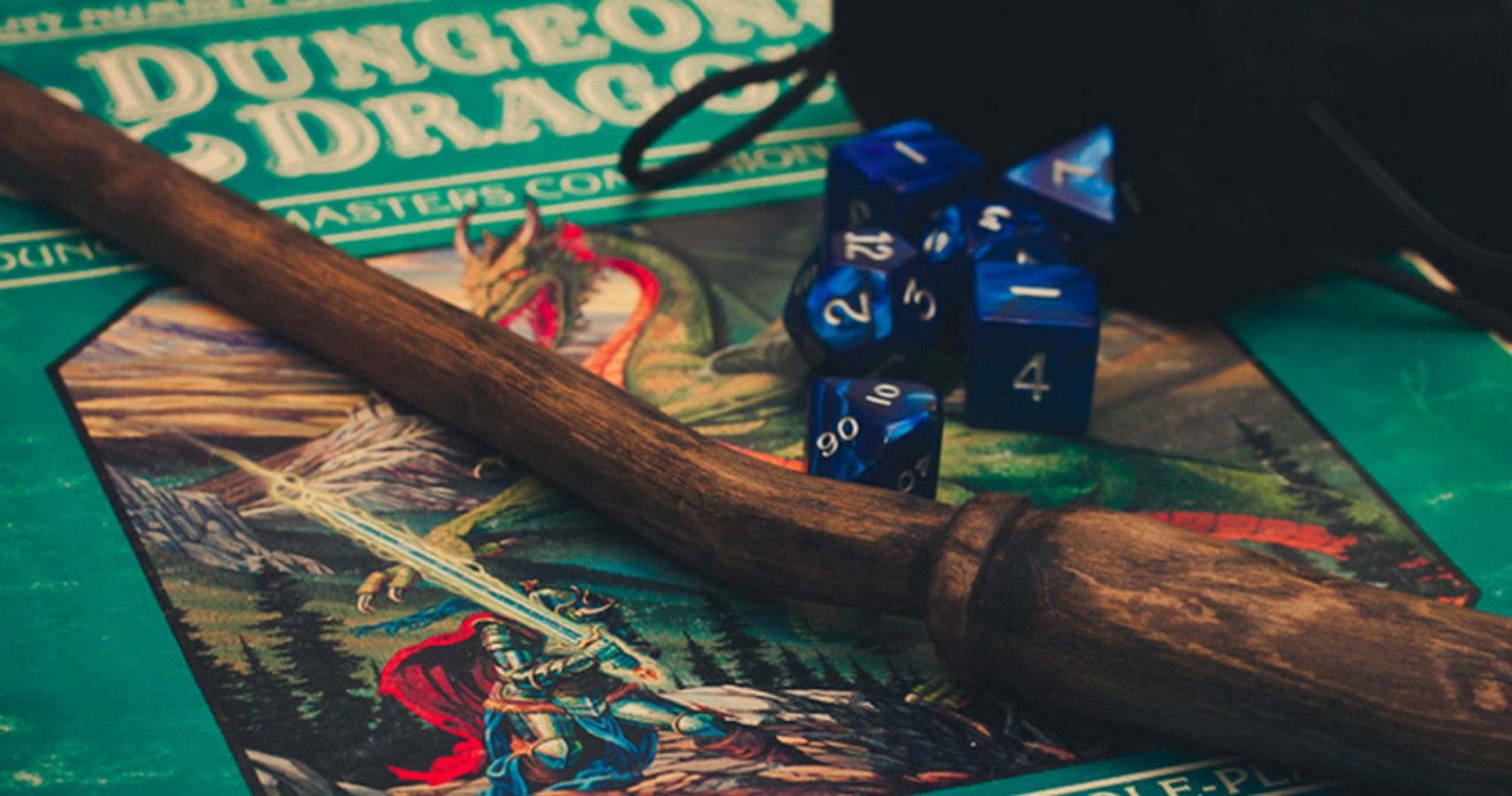
Dungeons & Dragons: 10 Tips Every Dungeon Master Should Use When Making A Campaign
In the game of Dungeons & Dragons, being a dungeon master can be complex. So here’s 10 campaign-making tips to make any DM’s life easier.
Attunement to the Hammer requires the acquisition of the Belt of Giant Strength (Rare) and Gauntlets of Ogre Power (Uncommon). This requirement might seem daunting, but getting the items above can be done at the beginning of a campaign. A Strength-based Cleric can become a juggernaut on the battlefield with these items. As a Legendary item, Clerics can expect this weapon to be tough to find. This weapon can either be found in ancient dwarven fortresses or inside dwarven cities.
Hammer Of Thunderbolts: How Does It Fit The Divine Agent?
This weapon acts more as a thematic part of the Giant’s Bane set but transforms the Cleric into a STR-based combatant due to the bonuses of both the Belt of Giant Strength and Gauntlets of Ogre Power. Its Thunderclap-based stun may be limited, but its five charges could be enough to stun a mob into submission – be it to help allies escape or hold them enough to get a lot of damage in.


